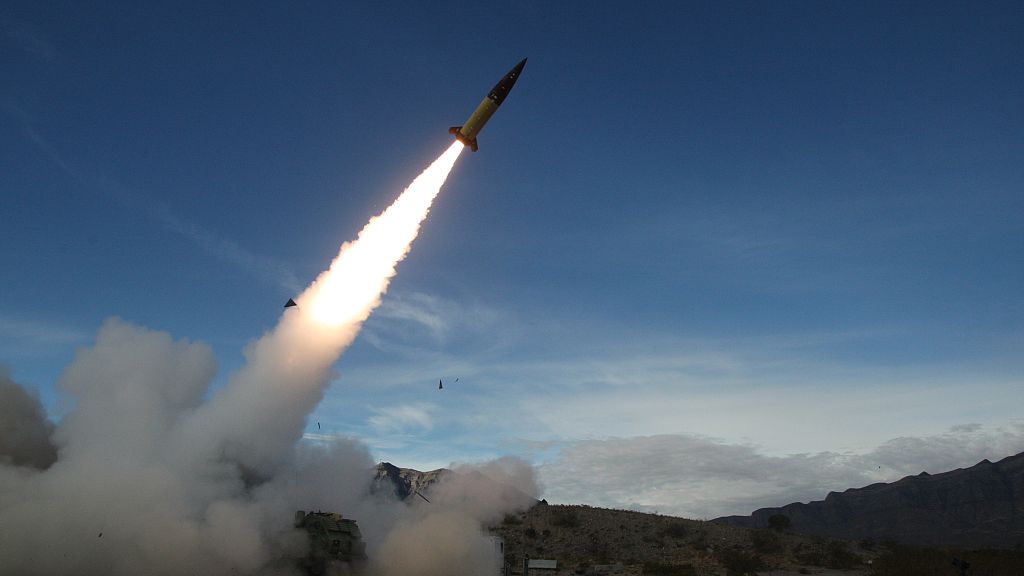
Nearly 1,000 days since Russia started its full-scale invasion of Ukraine, Washington is said to have authorised the use of US-provided ATACMS for the strikes deep into Russia. What difference could this make, and what targets could Kyiv strike?
It took the US around one month to come up with a response to the deployment of North Korean forces to the battlefield in the Kursk region, after Ukraine’s intelligence warned about Pyongyang sending personnel to Russia in mid-October.
On 24 October, Kyiv said that the first North Korean units trained in Russia had been deployed in the Kursk region. A few days later, the US and NATO confirmed that they, too, had evidence of North Korean troops being involved in Russia’s war.
Ukraine’s President Volodymyr Zelenskyy condemned the West’s lack of response to the Pyongyang troops joining Russia’s ongoing invasion, saying these “first battles with North Korea open a new chapter of instability in the world.”
Ukraine’s list of targets
Even before the first reports on Pyongyang’s involvement, Kyiv asked Washington to lift the restrictions on the use of US weapons deep into Russia’s territory.
Ukraine has argued for a long time that restrictions on the use of long-range weapons, specifically ATACMS, are stifling its war effort, while Washington claimed that allowing Ukraine to hit deep into Russian territory with its weapons could escalate the war.
Kyiv has ramped up pressure to lift the ban since its surprise incursion into Russia’s Kursk region at the beginning of August. According to the Ukrainian authorities, the list included airfields used by the Russian army to launch strikes against population centres across Ukraine.
Since then, Russia has moved almost all of its aircraft away from the airfields within the ATACMS range.
The Washington-based Institute for the Study of War think tank (ISW) revealed a map listing all the possible targets that Ukraine could strike. According to ISW, at least 245 known Russian military and paramilitary objects are within the range of Ukrainian ATACMS, specifically their 300-kilometre variant. Out of the 245, there are only 16 airfields, from which Russia has moved almost all of its aircraft.
If the restrictions are lifted only for the region of Kursk, Kyiv will have 15 known objects there, as per the ISW geolocated research.
By the end of August, there were also at least 11 sites, known as Russian “military land use” — areas designated for military training and testing purposes.
But this list can be much bigger with the deployment of North Korean personnel and Moscow’s efforts to push Ukrainian troops out of the Kursk region.
When Kyiv started the incursion, Russia had 11,000 troops in the Kursk region, according to the ISW. Based on these calculations, the US-based think tank reported about a total of 11 military land use sites and 15 known military and paramilitary structures of significance in Russia’s border region.
Related
According to the latest estimates, Moscow has by now amassed five times more personnel there, including North Korean forces, to carry out an assault on the Ukrainian positions.
Around 50,000 Russian and North Korean troops are set to participate in the assault.
Meanwhile, Zelenskyy said, “Our men are holding back … 50,000 of the occupier’s army personnel who, due to the Kursk operation, cannot be deployed to other Russian offensive directions on our territory.”
This could indicate that there are now more possible targets for Ukraine to strike in the Kursk region, even if the restrictions have been lifted only for this area.
EMEA Tribune is not involved in this news article, it is taken from our partners and or from the News Agencies. Copyright and Credit go to the News Agencies, email news@emeatribune.com Follow our WhatsApp verified Channel



